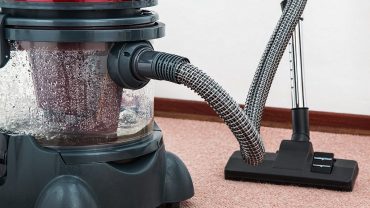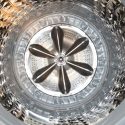Can You Put Detergent In A Steam Mop?
Steam mops are ingenious devices that are intended to perform exceptional floor cleaning tasks free from the use of dangerous chemicals. Pure, hot water is used to clean and sanitise instead.
Nonetheless, in today’s germ-phobic world, many people feel the need to add some sort of chemical to the mix. For this reason, “Can you put detergent in a steam mop? ” is a commonly asked question.
The short answer to that question is “No!“ A steam mop is intended to be used with clean, distilled or demineralised water and nothing else. Here is how you use a steam mop:
- Attach a fresh cleaning pad. Most steam mops come with two pads.
- Use the provided measuring cup to fill the machine’s tank with the right amount of distilled or demineralized water.
- Plug the unit in and wait for it to warm up (usually about thirty seconds).
- When the machine starts producing steam, you can start mopping.
The mop puts out scalding hot steam for thorough sanitizing, and the microfiber pads pick up every speck of dirt and hold onto it. The end result is a sparkling clean floor with no detergent fumes or residue.
When you follow instructions, you will surely find that the scalding hot steam does a superb job of breaking up dirt and grease and whisking it away. You are also sure to be surprised by just how dirty your mop pads get, no matter how clean you think you have been keeping your floor.
Steam Mop Manufacturers Warn Against Using Detergent
The manufacturer of Shark steam mops cautions against using any kind of detergent as it will surely damage the unit. They say that their steam mops are specially designed to provide exceptional cleaning without detergents or cleaners.
The Bissell corporation also says that their steam mops are made to clean thoroughly and naturally using only demineralised or distilled water. If you want a clean fresh scent, the company recommends their specially formulated Eucalyptus Demineralised Water. This product provides a crisp, fresh scent and makes your filter last longer!
There’s A Learning Curve!
Cleaning with a steam mop can take some getting-used-to. When you take good care of your unit, you can expect it to last a long time and provide consistently superior results. Here are a few precautions you should keep in mind:
1. Always unwind the cord, put the mop cloth on and fill the water tank before plugging the unit in. Plugging in is the last thing you should do before use.
2. Unplugging is the first thing you should do before refilling the reservoir or changing the mop cloth. When you run out of steam and/or dirt builds up, unplug your steam mop and allow it to cool down before adding water and/or changing the cloth.
3. Never allow your steam mop to idle. Leaving it unattended, even for a very few minutes, can cause serious damage to your floor.
4. Don’t steam mop a completely dirty floor. Always sweep or vacuum first to pick up larger dirt and debris.
5. Don’t store your mop with a dirty cloth. Always remove the cloth and wash it after every use.
6. When you wash your mop cloth, don’t use any fabric softener or dryer sheets. Wash mop cloths in regular laundry detergent with a pure water rinse cycle and line dry them.
7. Don’t use a steam mop on laminate or hardwood floors as the hot steam will damage wood and wood-based flooring.
8. Don’t mop non-floor surfaces. Steam mopping your walls will damage them. Only mop rugged surfaces such as steam resistant flooring.
9. Steam mop carefully around porcelain fixtures in cold weather. Hot steam on a cold toilet base or the base of your tub could crack the porcelain.
10. Read and follow instructions. Before using your steam mop for the first time, read the instructions thoroughly. Be sure to follow special instructions for your particular unit very carefully for best results.
Save Time And Money And Get Better Results!
When you use a hard floor steam cleaner you can save a lot of time and get superior results because hot steam is far more efficient than any detergent at tackling all manner of household dirt. Using water instead of chemicals is also a great way to save money and keep dangerous chemicals out of your immediate atmosphere while helping to protect the planet.





